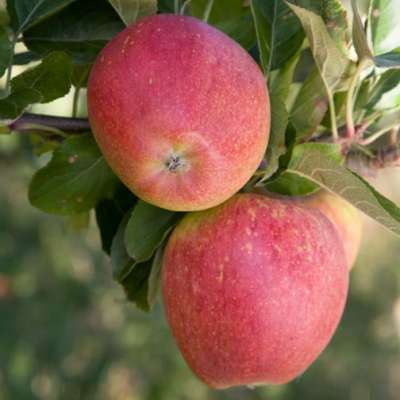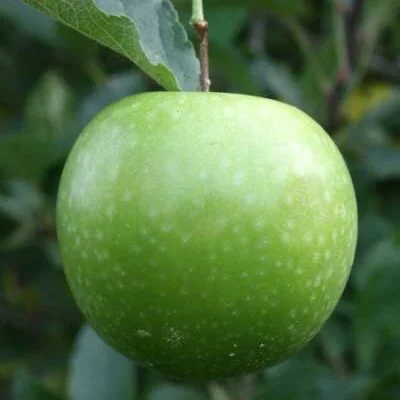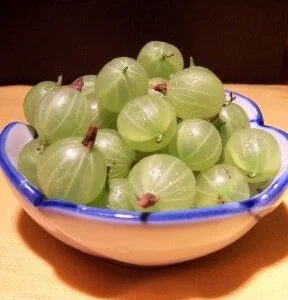Your basket is currently empty!
It seems UK gardeners are becoming more adventurous. Years ago there was a whole collection of ‘oddities’ – fruits of which we perhaps sold a handful each year and about little was known outside of the real fruiting plant buffs. But a penchant for the unusual and different has led to renewed interest in some of these peripheral fruits and it must be said that in a lot of cases this new found appreciation is justified – as they have a lot to offer. As they come from far-flung places and genus of course there is little to unify them and a lot of diversity to enjoy. This article aims to bring a basic understanding and a little encouragement in their cultivation. None of them can be said to be tricky or difficult and the greatest majority will thrive in your garden if you want them to!
Hybrid Berries
The greater majority of the rare or unusual will be found in this group. Most of them were raised by inter crossing various Rubus species – Blackberries and Raspberries for the most part, although the group has become a bit of a catch-all and includes dome others as well.
Boysenberry
Arguably the most famous here is the Boysenberry – a superb ‘king’ Blackberry with a deep damson purple colour and a very rich taste that has become legendary for jams and preserves or pies. Grow just as you would a Blackberry and the best bit – it’s thornless!
Youngberry
The Youngberry is a very seldom seen Blackberry hybrid, again thornless, that produces very good crops of glossy ebony black berries that have a complex, slightly aromatic flavour that sets it apart from the usual Blackberry. It is quite vigorous and a spsacing of around 10′ is wise, but it is very undemanding and tolerant perhaps even of less than ideal conditions, as well as some shade; well worth a go!
Sunberry
The Sunberry is not currently on our lists but a variety we are considering re-introducing. It was introduced about 20 years ago in a blaze of publicity but quickly fell out of favour because of its super-vigour which was too much for many gardeners. But if you have the room it can become a very rewarding fruiting plant to grow, producing a positive mountain of large wine purple juicy loganberry-type fruits It is thorny but pliable and easy to train and unlikely to resent any soil.
Veitchberry
Another Blackberry Hybrid is the Veitchberry, a thorny individual with large logan type berries, the flavour is superb, deep, complex, rich an juicy. Great for eating fresh or all culi nary purposes. Ripening late August-early September, they can be frozen too. Another easy to grown individual that is well worth a punt.
Jostaberry
Two other crosses that arose from rather different parentage are the Jostaberry and the Japanese Strawberry. The Jostaberry has a Blackcurrant and a Gooseberry as it’s parents. It really resembles the Blackcurrant to a greater degree but the fruits are much larger and sweeter – suitable even for dessert. This makes a vigorous, easily grown free standing bush or perhaps 6′ in height. The Jostaberry seldom gets mildew and would certainly be well worth growing. Prune as you would a Blackcurrant.
Japanese Strawberry
The Japanese Strawberry – [a name that has been coined along the way at some pojnt, for we can find no connection to Japan at all] arose as a very interesting and inspired cross between a Strawberry and a Raspberry. It forms a neat, low spreading sub-shrub that may die down completely each Winter but invariably shoots again from below ground each Spring. It can form colonies of short 18″ stems clothed in pretty toothed foliage that colours strongly in the Autumn to orange and yellow. Its large solitary white flowers have a green centre and set brilliant red berries which although a little empty of flavour, are sweet and a pleasure just to pick and eat as you are passing. It has a long fruiting season and it’s not unusual to find the Japanese Strawberry in fruit from July through August.
Japanese Wineberry
A couple of species that arose in the wild are well worthy of mention. The first has been known for many years as the Japanese Wineberry [Rubus phoeniciolasus] This outstanding easily grown garden ornament has all the main framework of canes densely covered in a rich wine red fuzz, a real feature, especially in the winter sunshine. It can easily be grown purely for ornament and trained against a wall or grown as a free standing shrub of maybe 6-8′ in height and width. Its very ahrdy and the clusters of vermillion orange to red fruit sripen from late July. They are sweet enough for dessert and said to be at their best served sprinkled, decadently, with a little red wine! I really like the leaves of the Japanese Wineberry too, deeply veined and lime green.
Black Raspberry
The other species I want to mention here is a the so called Black Raspberry, a Raspberry species from the America’s, Rubus occidentalis. It was briefly popular nearly 30 years ago and two selections [named varieties] were introduced from it, called Blackie and Starlight. Sadly no stock exists these days but we are working on it’s re-introduction. The berries are smaller than a cultivated Raspberry and a deep purple-black in colour with an amazing intense flavour.
Lingonberry
One recently ‘discovered’ fruit for the garden doesn’t easily fit into any category at all. A distant relative of the Blueberry, and requiring ericaceous soil the same, the Lingonberry hails from Northern Europe and arrived with a blaze of publicity arising from its super-health properties, as the sparkling red berries are packed full of antioxidants and vitamins. In use and appearance these berries resemble most closely the Cranberry and its best to juice them or make them into sauces the same – both very easily done. But in appearance the Lingonberry really is on its own. A low, glossy leaved evergreen with oval foliage and with neat, upright growth to perhaps 18″ at most. Its very easily accommodated and doesn’t mind a little shade, it is also ideal for pots and planters, as long as you remember to use ericaceous compost. The pretty little pearly white and pink bell flowers are very bee-attractive and appear in May. The berries have a long life and can appear from late Summer, right through the Autumn and into Winter. The latin name for the Lingonberry is Vaccinium vitis-idaea and it was infact listed amongst specialist shrub growers as a shrub of ornamental value.
Unusual fruit trees
If you move away from the traditional Apples, Pears Plums and Cherries brigade you might discover one or two treasures along the way that you might never have thought of growing.
Asian Pear
An Asian Pear arose as a cross between an Apple and a Pear tree and has resulted in a very different tree for the orchard. In habit it perhaps resembles a Pear tree more, certainly its glossy green oval foliage and domed umbels of hawthorn-scented flowers recall those of a Pear. But the fruits resemble neither. Rounded, with a rough amber colour skin, the dense and juicy fine white flesh is an eating sensation and the delicate, subtle flavour a revelation. To grow an Asian Pear [there are 4 named varieties] you need to find the warmest, sunniest spot. They have proven to be pretty hardy in general but in this run of severe winters, it would be wise to afford them the best protection, especially if you live in the North,especially as the blossom can be prone to frost damage. One of the best ways of growing an Asian Pear would be as a cordon against a sunny wall.
The Medlar
The Medlar [Mespilus germanica] has been a Cottage Garden favourite for centuries. This small, intriguing and picturesque small tree can be planted as an ornamental tree and its ideal for smaller gardens, as a centrepiece to lawn or border. Its slightly fizzy leaves turn to excellent Autumn leaf shades and its large single white flowers appear in May. The Medlar fruits themselves have led to a certain amount of notoriety as it became known that they had to be virtually rotten before being suitable for use. They are made into jellies that can be served with hot and cold meats and the flavour is entirely unique. The Medlar is an unusual and worthwhile tree to grow both for its appearance and its unique properties. The variety Nottingham is the best fruiting form and the variety most often grown.
Peach trees
Peach trees are almost common place these days but one unique and very different variety that was introduced a few years ago certainly bears mention here. Saturn – the Honey Peach has a noticeable flattened, even squashed shape to the fruits. The flesh is white, juicy, very, very sweet – hence Honey Peach – and entirely delectable! It isn’t quite as hardy as a normal Peach and does really well in 20″ containers on the patio, or grown in a cold greenhouse or sun lounge. The pretty rose pink flowers are typically that of a Peach and it’s self fertile.
I hope the above has given you an appetite to try something new in the fruiting plants world today.






